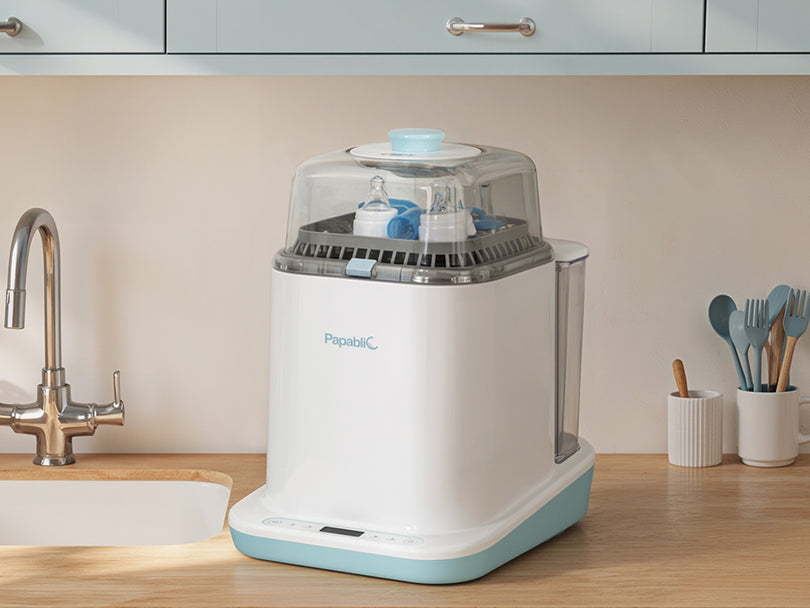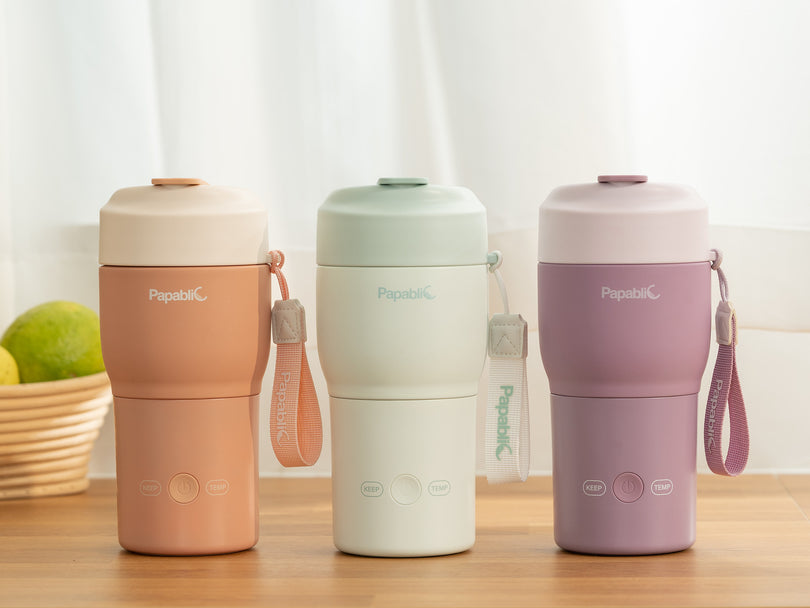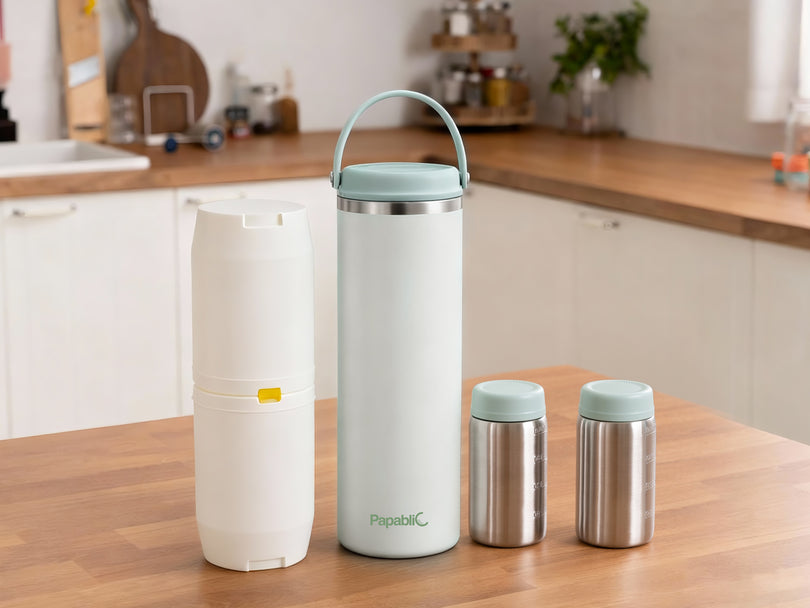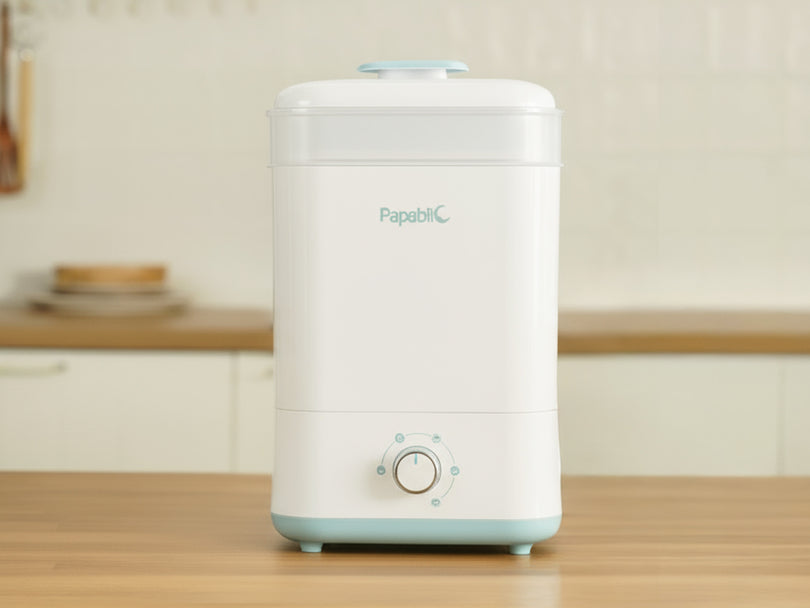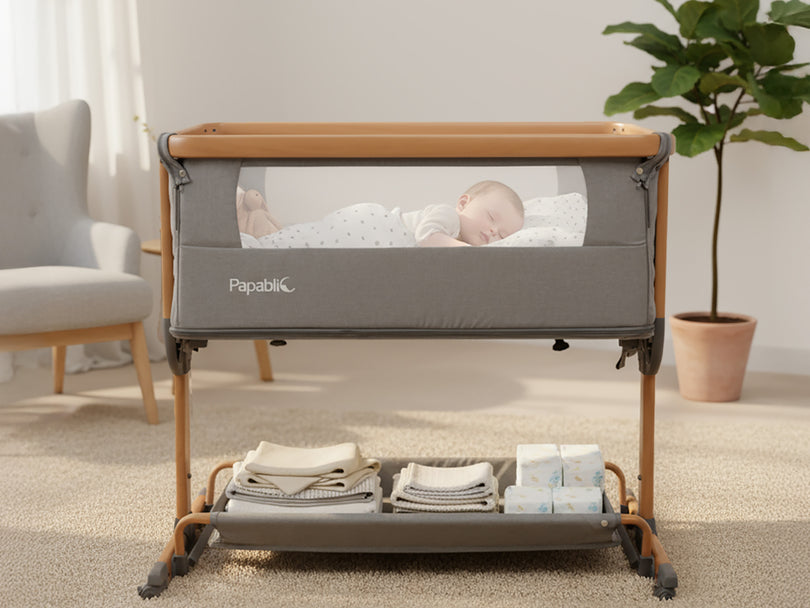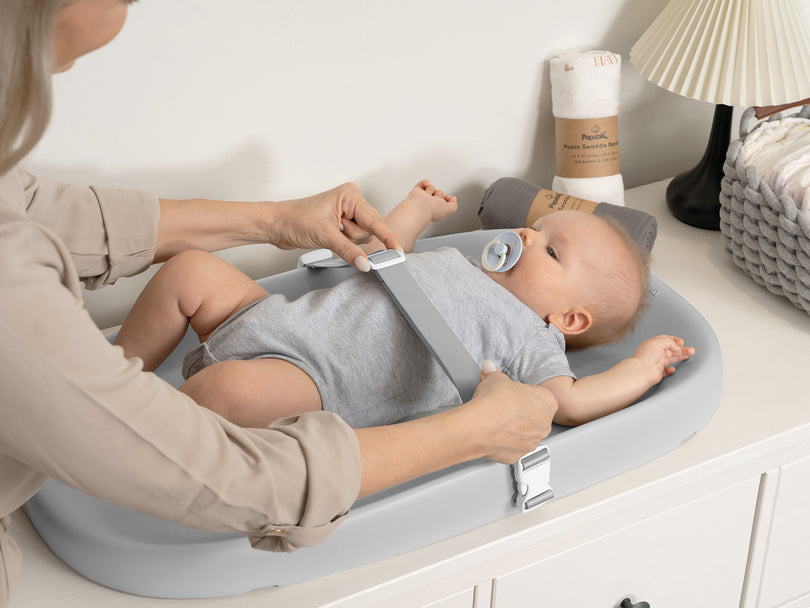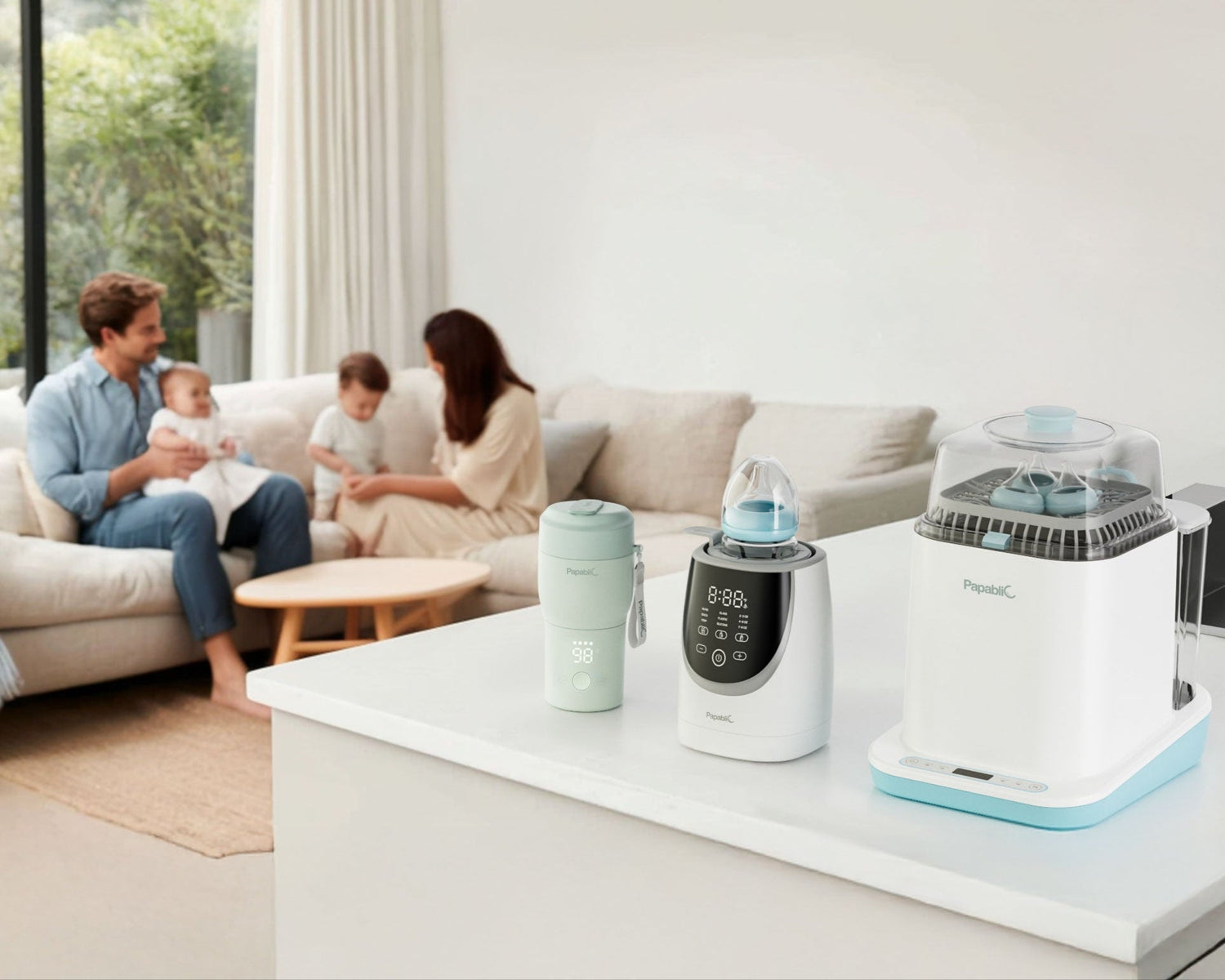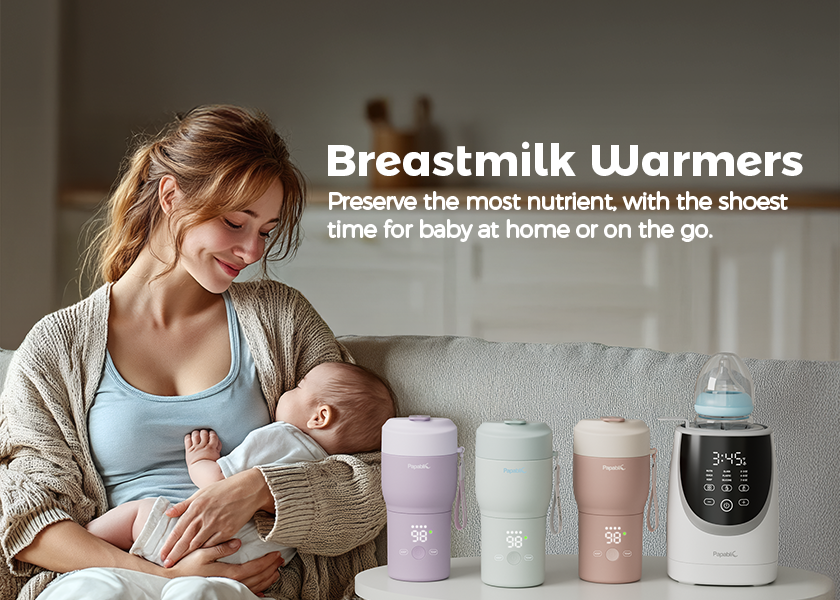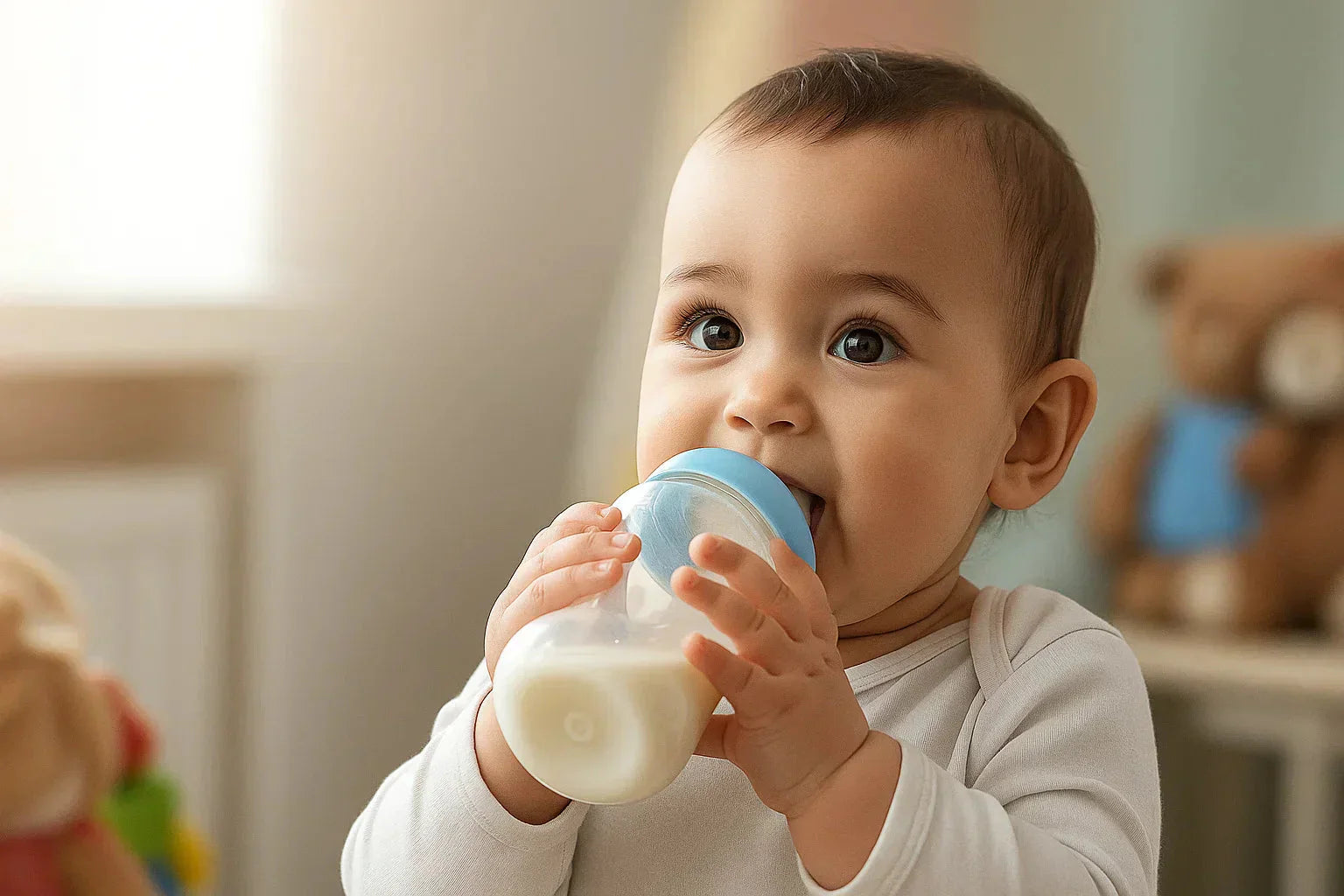The process of introducing a bottle to a breastfed infant may seem an enthusiastic but sensitive process. Lots of parents ask themselves when they should start bottle feeding, how to understand that their baby is ready to drink out of a bottle, and how to do everything without difficulties and tension.
This guide provides a comprehensive look at when to introduce a bottle to a breastfed baby, signs to watch for, useful tips to ease the change, common challenges, and when it might be best to hold off. We will also mention some great baby products to assist parents in this transition, which include the Papablic Portable Bottle Warmer & Sterilizer On the Go, and Papablic Baby Bottle Washer Sterilizer and Dryer All in One Bottle Cleaner.
Ideal Timing for Introducing a Bottle
It is important to know the right time to start feeding the baby with a bottle, but it is relative in different families, as it depends on many factors, such as the age of the baby, the way he is fed, and the preferences of the parents or their requirements.
Many experts suggest bottle-feeding after the mother-nurture bonding issue stabilizes. This is normally after 3 to 4 weeks following birth. At this point, usually the baby is latching well, the supply is more established, and the breastfeeding routine is established.
Putting a bottle in too early, particularly in the first few weeks, could possibly cause nipple confusion where the baby prefers the bottle nipple to breastfeeding. This may complicate latching on the part of the baby and possibly the milk supply.
However, it may even be necessary to introduce the bottle earlier in some situations, e.g., when one returns to work or when there is some medical need. In this case, the introduction must be done gradually, and every care should be given and fed depending on the feeding cues.
Signs Your Breastfed Baby Is Ready for a Bottle
There are various hints that babies will display when they are ready to be introduced to bottle feeding. It may be indicated by such factors as:
More keenness on feeding options: There is a chance that your baby might become curious about bottles or other feeding tools during feeding.
Feeding flexibility: Your baby may be prepared to take occasional bottle feeds when he or she starts demonstrating longer periods between breastfeeding sessions.
Quick and easy acceptance of the feeding bottle: When your baby gets that bottle nipple with no fuss or muss, then that is a good sign that he/she is ready to change.
Parental readiness: At times, the willingness to incorporate a bottle is according to the timetable or the situation of the parents, like going back to work or having someone to feed the baby.
Noticing such signs, parents can easily switch to bottles as the child can be introduced to bottles without special force or hurry.
Tips for a Smooth Transition to Bottle Feeding
You need not feel pressured to introduce a bottle to a breastfed baby. Being patient and using appropriate methods, you can make the transition happen painlessly, not only to you but also to your baby.
1. Maintain a Comfortable Feeding Environment
Creating a calm and cozy environment helps your baby feel safe and secure, just like during breastfeeding. Hold your baby close, allowing them to feel your warmth and heartbeat, and maintain gentle eye contact to strengthen your bond. Try to replicate familiar breastfeeding positions, supporting your baby’s head and body comfortably. Soft lighting, a quiet space, and gentle soothing sounds can further help your baby relax, making the feeding experience pleasant and stress-free for both of you.
2. Choose the Right Bottle Warm, Nipple, and Tools
Opt for bottle warm and nipples designed to closely mimic breastfeeding, which can reduce bottle rejection and help your baby transition smoothly. Select slow-flow nipples that replicate the natural flow of breast milk, making feeding more comfortable and familiar for your baby.
A suitable bottle is also an essential choice during the transition period. The Papablic Portable Bottle Warmer & Sterilizer On The Go not only a portable bottle warmer warms milk but also sterilizes bottles and nipples—perfect for maintaining hygiene. It heats quickly, warming 4 oz of refrigerated milk in just 2.5 minutes—around 30% faster than many competing models. It's a rotating water bath with smart temperature control that gently warms milk to 37°C, ensuring even heating, preserving nutrients, and preventing hotspots. The wide-mouth design allows easy cleaning with a brush or sponge, helping avoid residue buildup—making it an excellent choice for busy parents on the move.
3. Introduce Bottle Feeding Gradually
Any sudden switches should be prevented by presenting the bottle gradually. Begin with one bottle feeding a day, ideally when your baby is relaxed and slightly hungry rather than starving and overtired. This approach increases the chances they’ll accept the bottle happily. Stay calm and patient—your baby should make this discovery at their own pace, and it may take a few tries before they feel comfortable.
To make this transition smoother and ensure every feeding is just right, the Papablic NutriWarm™ Swirlable Bottle Warmer warms milk effectively without overheating, preserving nutrients and taste—two key factors for your baby’s acceptance. One-click operation and smart memory remember your preferred settings for effortless feeding. It fits all bottle sizes and materials, warming breast milk in just 3 minutes and 30 seconds with gentle water-bath heating, or formula milk in only 2 minutes and 30 seconds.
4. Ensure Safe and Hygienic Bottles
When bottle-feeding your baby, it’s essential to ensure the bottles are completely clean, as unclean feeding equipment can lead to health issues such as oral thrush. The Papablic Baby Bottle Washer Sterilizer and Dryer is an all-in-one solution is an all-in-one baby bottle washer that efficiently washes, sterilizes, and dries up to eight baby bottles at once—along with nipples, breast pump accessories, and other feeding tools. Its powerful spray system, featuring 26 water outlets and high-pressure jets at 25,000Pa, ensures a thorough wash at 162℉, reaching every corner for complete peace of mind. The dedicated baby-product cleaning system also helps prevent cross-contamination and odor transfer from other household items, keeping everything your baby uses hygienic, safe, and ready when you need it.

Common Challenges During the Transition
Although most babies take to bottle feeding without any trouble, there are several issues that are likely to come up:
Nipple confusion: Nipple preference is a problem that occurs occasionally when babies find it easier to take the bottle because of its faster rate as opposed to breastfeeding, thus hindering the latch. This risk can be restricted with the application of slow-flow nipples and slow incorporation.
Rejection of the bottle: It can take some time and patience to accept the bottle. It may be possible to help by changing feeding positions or providing the bottle when the baby is quiet.
Change of feeding frequency: Adding a bottle may change feeding schedules, and you probably will need to accommodate a change in pumping or breastfeeding routine.
Milk temperatures: Babies are temperamental with respect to milk temperatures. Acceptance can be helped by warming the bottle to body temperature using aids such as the Papablic warmers.
When facing these difficulties, parents should remain calm and make timely adjustments.

When Not to Introduce a Bottle
Although it may be convenient or sometimes necessary to introduce a bottle, there are some circumstances that indicate that one should wait or prevent the introduction of a bottle:
In cases where breastfeeding is not well entrenched yet, early introduction of a bottle may hinder the success of breastfeeding.
When a baby is sick or when the mother is having trouble breastfeeding: When one of the children or the mother is having trouble breastfeeding, it is usually better in most cases to be more concerned with breastfeeding help.
Unless medically required, when the baby is less than 3 weeks old. Early introduction can distract the feeding signals of the baby.
Here, personalized advice could be received through a lactation specialist/pediatrician.
Conclusion
When to introduce a bottle to a breastfed baby is a significant step that requires thoughtful timing, patience, and the right tools. To have a successful transition, it is important to wait until your baby is established at breastfeeding, learn to watch the signs your baby is ready to feed, and begin to introduce a bottle gradually.
Parents and babies can make this journey easy and hygienic by investing in trustworthy feeding accessories such as what Papablic offers: the Papablic Portable Bottle Warmer Sterilizer On the Go, A reliable bottle warmer sterilizer not only keeps milk at the perfect temperature but also ensures the bottle is clean and safe for every feed.
Do not forget that there is no standard baby. A family needs to apply what suits another. Be patient, open-minded, and mindful of your baby, and the process will eventually reward you as a parenthood experience.
Read more:
Can You Feed a Baby in a Car Seat: Travel Safety Tips and Risks

